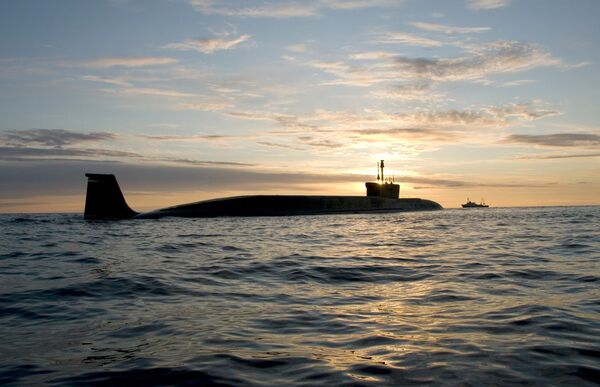MOSCOW, November 11 (RIA Novosti) – Russia’s fifth-generation strategic and attack submarines will most likely be non-nuclear-powered, more compact and less “visible,” a senior designer at the Rubin design bureau said Monday.
Large nuclear-powered vessels, including Russia’s Typhoon-class strategic boats, have so far dominated past and current trends in combat submarine construction.
“I believe future submarines will be smaller, because of the use of more advanced technologies as well as the pursuit of more cost-effective production,” Sergei Sukhanov said in an exclusive interview with RIA Novosti.
“The fifth-generation boat will also be less ‘visible’ compared with existing submarines. They could also feature a new power plant, including fully electric,” Sukhanov said, adding that changes could affect other sub-systems of future submarines.
The designer said the most likely substitution for a nuclear reactor on strategic and attack submarines would be an air-independent propulsion plant (AIPP), which would make them stealthier than nuclear-powered boats.
The AIPP allows a non-nuclear submarine to operate without the need to access atmospheric oxygen.
While a nuclear submarine’s reactor must constantly pump coolant, generating some amount of detectable noise, non-nuclear boats running on battery power or AIPP can be practically “silent.”
“The endurance of submarines with this type of propulsion should be sufficient [for patrol or strike missions] – for a month or even more,” Sukhanov said.
He said the construction of fifth-generation submarines in Russia could start in the next 10 to 15 years.
The Russian Navy currently relies on third-generation submarines, with fourth-generation subs of the Project 955 Borey class of strategic boats and Project 885 Yasen class of attack boats just beginning to be adopted for service.

Russia is planning to build eight Borey-class and eight Yasen-class submarines by 2020. They are expected to become the mainstay of the country’s nuclear-powered submarine fleet for at least two decades.

